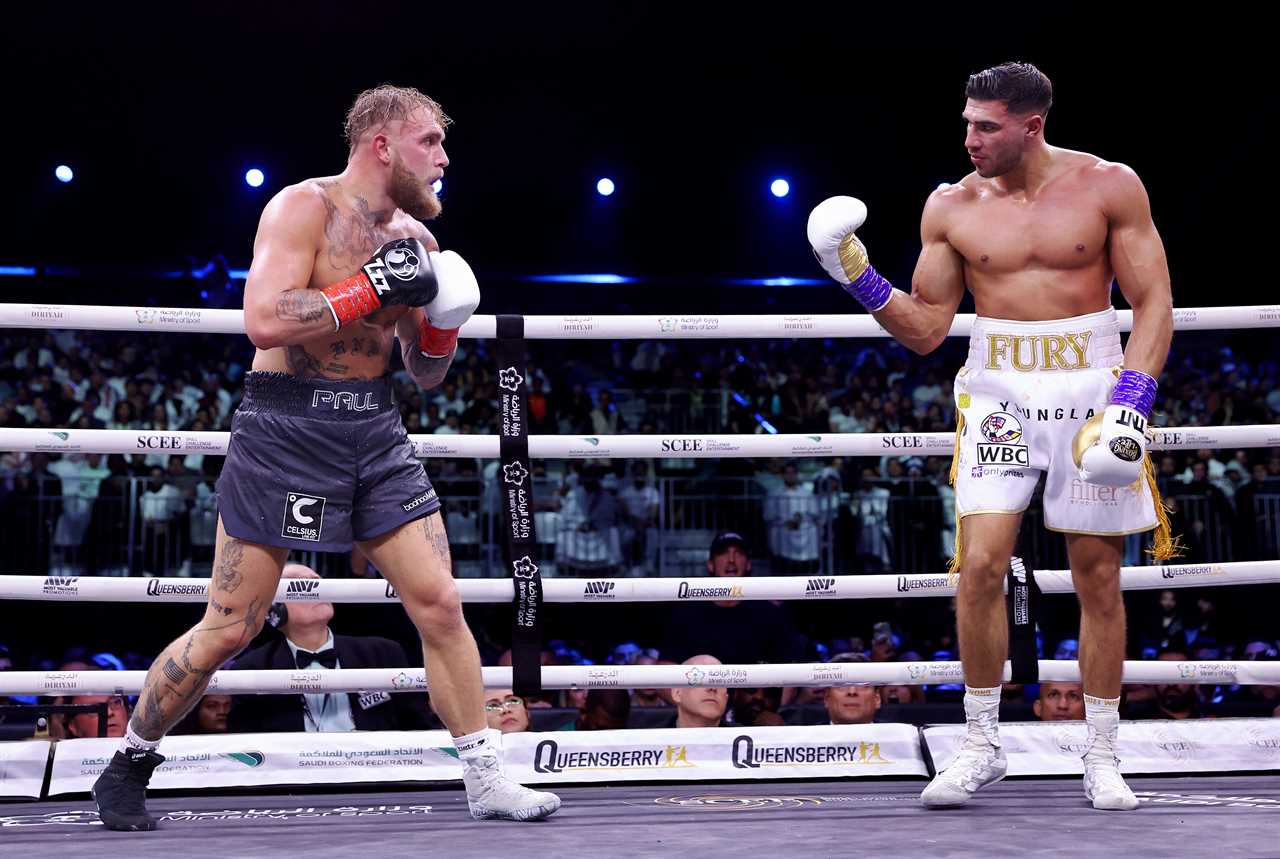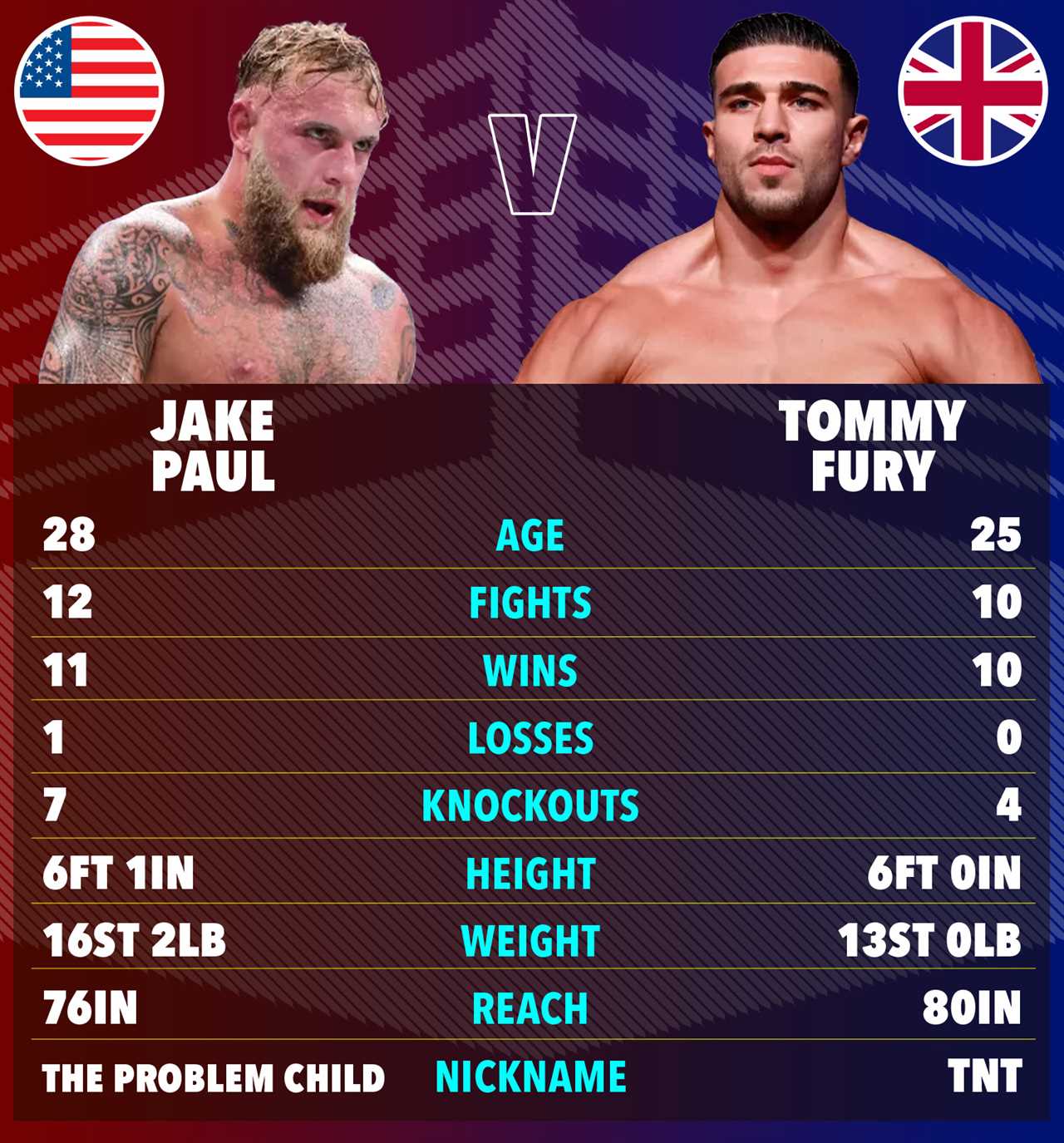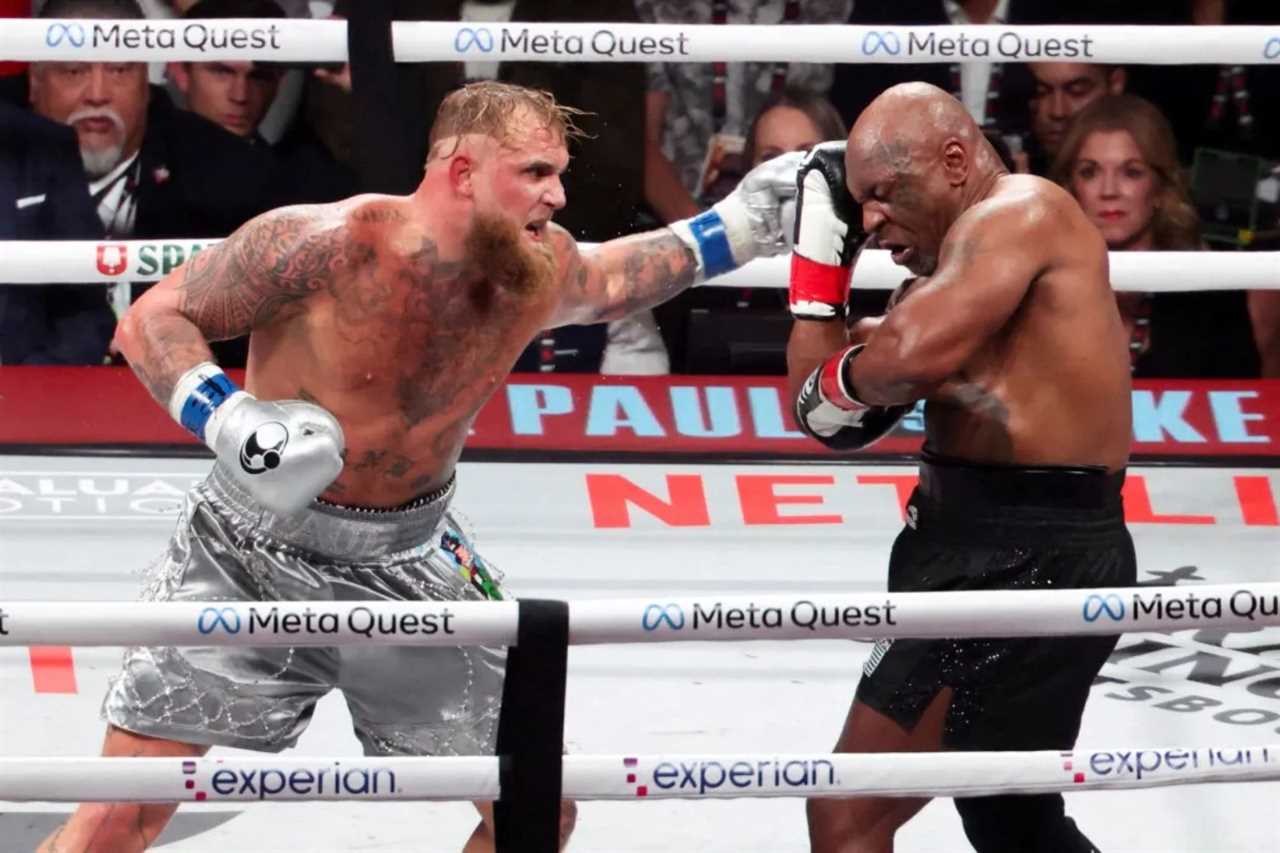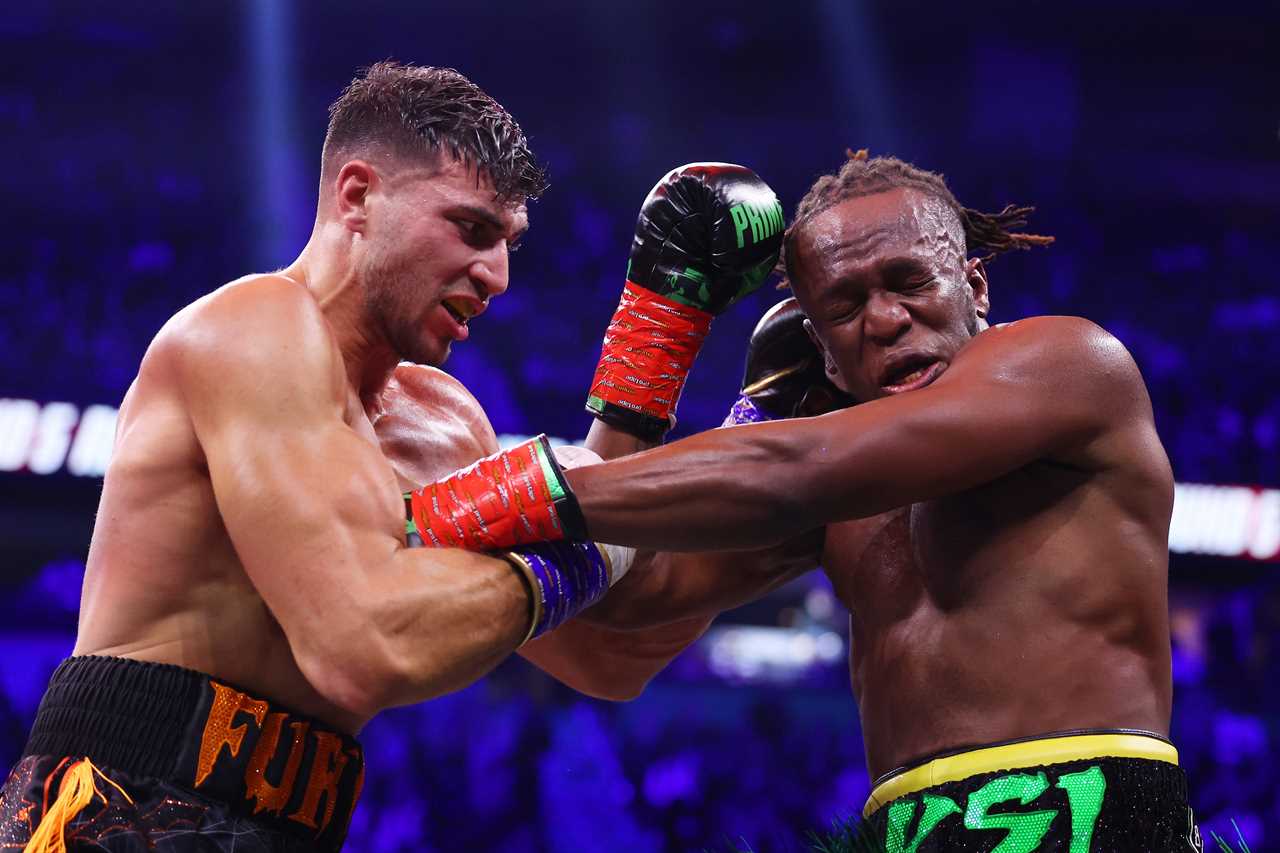
Jesus Christ. Sometimes I wonder if these boxers have actual brains or just use their heads as fancy punching bags. Tommy Fury – you know, the pretty boy who's more famous for reality TV than actual fighting – has apparently been turning down MULTIPLE offers to rematch Jake Paul. And we're not talking chump change here.
I nearly spit out my coffee when I heard the numbers.
Show Me the Money (That Tommy Doesn't Want)
So here's teh tea: Paul's team claims Fury rejected a $6 million offer to fight on Netflix last year. SIX. MILLION. DOLLARS. And it could've gone up to $8 million with bonuses. That's £4.5-6 million in British money, which buys a lot of protein shakes and designer clothes for our boy Tommy.
My buddy who works in sports management texted me about this yesterday: "This kid's turning down more money than most boxers see in their entire careers. Is he smoking something?"

Nakisa Bidarian (Paul's promotional partner) didn't mince words when talking to SunSport. He straight-up said Tommy had "a false sense of expectations" and – this is the kicker – "Jake's not gonna ever offer him that kind of money again."
Wait... What Was Tommy Thinking?!
Look, I've covered boxing for almost 7 years now, and this might be the dumbest career move I've witnessed. Bidarian claims they've made "multiple offers" while Team Fury hasn't made a single counter-offer. Not one!
Remember when Fury beat Paul via split decision back in 2023? That was his moment. His big breakthrough. He became the first and only fighter to hand the YouTuber-turned-boxer an L.
And what has he done with that momentum?

Absolutely jack shit.
The Tyson Factor (Or How Tommy Got Replaced By a Senior Citizen)
While Tommy's been sitting on his hands (well, one hand – he claims he had surgery), Paul went ahead and fought MIKE FREAKING TYSON. Yes, 58-year-old Iron Mike stepped in where Fury wouldn't.
Was it controversial? Hell yes. Was it watched by over 100 MILLION people on Netflix? Also yes.
I watched that fight with about 15 friends at my apartment. Cost me $75 in pizza and beer, and honestly, it was worth every penny just to see the spectacle. The fight itself was... well, let's just say Tyson moves like I do after Thanksgiving dinner now, but still. It was MIKE TYSON.

Depression, Injuries, or Just Greed?
Fury's camp has been spinning various excuses. He's fought just once since beating Paul – a disputed decision win over KSI in October 2023. Then there was hand surgery, and he pulled out of a January comeback after Darren Till threatened to kick him in the ring (which... what? This is boxing, not a street fight).
Tommy also claims he's been battling depression while recovering from his hand injury. And listen, mental health is serious business – I'm not gonna mock anyone for that struggle.
But according to Bidarian, that wasn't why Tommy rejected the rematch offers. "They were turning it down because they wanted a lot more money," he said.
The Brutal Reality Check
Back in 2018, I interviewed an old-school boxing promoter who told me, "The window for fighters is small. When the money's there, you take it." Poor Tommy... he didn't get the memo.
Bidarian dropped this truth bomb: "The only place where Tommy Fury can make anything close to the numbers that Jake Paul offers Tommy Fury is to fight KSI again."
And then came the knockout punch: "Jake's at a point where he doesn't need Tommy Fury to have his career continue to rise. Tommy Fury definitely needs Jake Paul."
Dammit, he's right. While Paul has racked up five wins since their bout (including the Tyson spectacle), Fury's been... what? Posting Instagram stories? Dealing with tabloid drama?
So What Now?
I reached out to someone close to Tommy's camp yesterday (no names, but let's just say they've seen the contract offers). Their response: "Management's convinced they can get more elsewhere. I'm already updating my resume."
Maybe Tommy thinks his reality TV fame and good looks will carry him forever. Or maybe he's getting bad advice. Either way, turning down $6-8 million for a rematch you've already proven you can win? That's... well...
Beyond ridiculous.
Frequently Asked Questions
Do you have to be a certain age to learn how box professionally?
Professional boxing has age restrictions. Most boxing commissions require boxers to be at least 18 years old to fight professionally. Although there is not a set age limit for the upper age bracket, factors like physical capability and health will naturally limit what age one can safely and effectively compete. Before taking up a sport professionally, older athletes should be assessed thoroughly for their fitness and risks.
What are professional boxing's risks?
As with any contact sport there are inherent risks in professional boxing. This includes acute injuries like cuts, bruises broken bones and head trauma as well as chronic conditions such as concussions or neurological disorders. Although boxing regulations and safety equipment can help to reduce risk, it is impossible to eliminate them completely. Boxing professionally requires you to accept and understand these risks.
How does a boxer progress from amateur level to professional level?
In order to transition from amateur boxing into professional, there is a major increase in the intensity of competitions, training and mental prep. An amateur must demonstrate a high level of performance by taking part in local or national competitions. It is crucial to acquire a boxing license, and align yourself with experienced trainers and managers who can guide your career decisions and secure you professional bouts.
How important is physical conditioning in professional boxing?
Professional boxing demands a high level physical conditioning. The sport demands high levels of strength, speed, endurance, and agility. Professional boxers should follow a tailored fitness plan that includes aerobic and aerobic workouts, strength and endurance training, and flexible exercises. Without superior physical conditioning, a boxer's ability to train effectively and perform in the ring is significantly compromised.
How do boxers control their weight and maintain their weight classes?
Boxers manage their weight by adhering to strict diets and precise training regimens. Nutritionists will help develop a weight loss plan for boxers that is based on their goals and doesn't compromise nutrition or training energy. The importance of regular weight check-ins and regular exercise is crucial, especially in the run up to a fight. Weight management can be a strategy that can cause health problems or poor performance if it is not done correctly.
Can anyone learn to box?
Boxing is a sport that many people can enjoy, but not everyone has what it takes for them to compete on a professional stage. Professional boxing demands a unique combination of talent as well as physical abilities, mental strength and dedication. Prospective boxers should also be willing accept the inherent risk of the sport. A thorough examination by a trainer is a good way to determine whether or not someone has potential for a boxing career.
What is the best equipment for a beginner in professional boxing to start with?
If you are just starting out in professional boxing, essential equipment for beginners includes boxing gloves and hand wraps. Also, a mouthguard is necessary, as well as headgear, proper footwear, and a mouthguard. Technical workouts require a heavy bag or speed bag as well as a double-end, double-end, or other training aids. You should use durable, high-quality equipment to protect yourself from injury.
Statistics
- Less than 10% of professional boxers are undefeated throughout their career, highlighting the sport's competitive nature.
- On average, a professional boxer spars between 100 to 200 rounds in preparation for a major fight.
- A study showed that most professional boxers have spent more than 4 years in training before their first professional bout.
- Cardiovascular fitness is critical, with a focus on high intensity interval training, comprising up to 40% of a boxer's conditioning program.
- Approximately 80% of professional boxers start their career in the amateur ranks before transitioning to the professional level.
- An analysis of boxing injuries suggests that 90% involve the head, neck, and face, emphasizing the importance of protective gear.
- Research shows that a boxer's reaction time is typically under 0.25 seconds, honed through repetitive drills and sparring.
External Links
How To
How to Develop Strong Boxing Footwork
For professional boxers, a good footwork is essential. To improve your footwork, start with balance exercises to enhance stability. Implement agility ladder drills to increase foot speed and coordination. Shadowboxing in front of a mirror can help you observe and refine your movements. Practice pivoting and changing direction swiftly, and use jump rope workouts to build rhythm and endurance. Regular sparring sessions provide experience on how you can move around in the ring effectively under pressure.
 CricketBoxingFormula 1GolfHorse RacingPremier LeagueTennisPrivacy PolicyTerms And Conditions
CricketBoxingFormula 1GolfHorse RacingPremier LeagueTennisPrivacy PolicyTerms And Conditions
